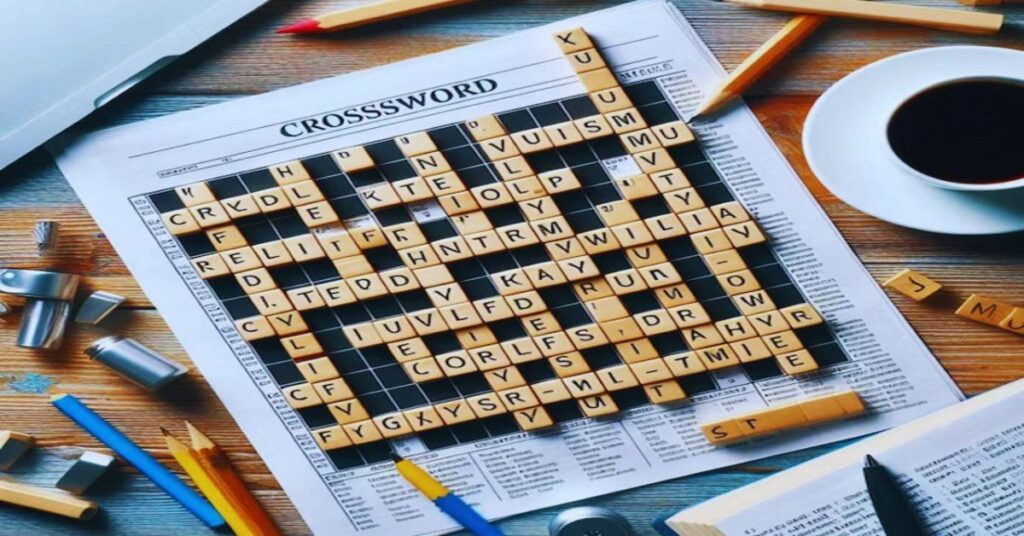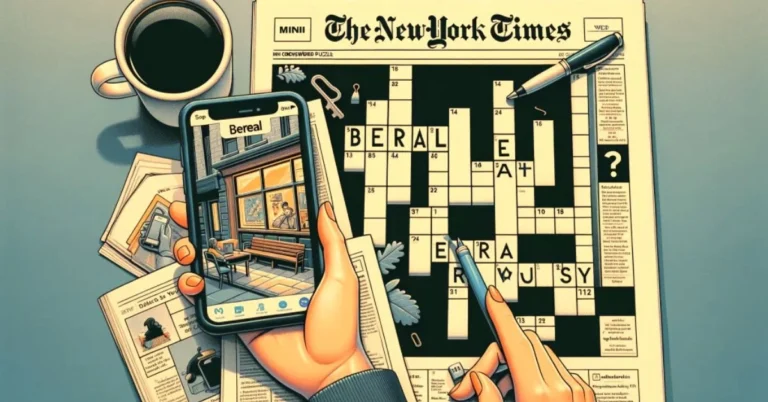Crossword puzzles are more than just a pastime; they are a journey into the realm of words, logic, and creativity. The appeal of crossword puzzles lies in their capacity to test mental agility, enhance vocabulary, and entertain players simultaneously. Among the myriad clues found in crossword puzzles, some stand out for their uniqueness and intrigue. One such clue, “naked rodent NYT crossword clue,” has captured the attention of crossword enthusiasts. This article explores the allure of the game, the significance of such peculiar clues, and strategies to excel in crossword solving.
The Rise of Crossword Puzzles in Modern Times
Crossword puzzles have evolved significantly since their inception in the early 20th century. Originally appearing in newspapers, they have now transitioned into digital formats, mobile apps, and even competitive events. The New York Times (NYT) crossword puzzle is considered the gold standard in the puzzle world, offering players a blend of challenge and creativity. Clues like the “naked rodent NYT crossword clue” highlight the clever and often humorous nature of the puzzles, making them enjoyable for players of all skill levels.
The popularity of crossword puzzles can be attributed to their versatility. They cater to a diverse audience, ranging from beginners tackling simple word grids to seasoned solvers who relish the intricate wordplay in the Sunday edition of the NYT crossword.
What Makes the “Naked Rodent NYT Crossword Clue” Memorable?

The clue “naked rodent NYT crossword clue” is a testament to the wit and charm of crossword creators. It likely references the naked mole rat, a fascinating animal known for its unusual appearance and unique biological traits. This type of clue embodies the essence of crosswords: combining trivia with clever phrasing to challenge players.
Such clues encourage solvers to think outside the box. Instead of directly stating the answer, the clue employs wordplay, cultural references, or double meanings. For example, “naked” might hint at something bare or exposed, while “rodent” narrows the focus to a specific category of animals. The player must then connect these dots to arrive at the answer
The Anatomy of a Crossword Puzzle
Understanding how crossword puzzles are constructed can enhance the problem-solving experience. Each puzzle consists of a grid with intersecting horizontal and vertical lines. The clues are categorized as “across” and “down,” and they range from straightforward definitions to cryptic wordplays.
For instance, a simple clue might be:
Clue: “Small rodent (4 letters)”
Answer: “Mouse”
In contrast, a cryptic clue like the “naked rodent NYT crossword clue” might use puns, anagrams, or cultural hints, requiring solvers to interpret the clue on multiple levels.
The Art of Crafting Crosswords
Crossword constructors are the unsung heroes of this intellectually stimulating game. Crafting a crossword puzzle involves creativity, language skills, and a deep understanding of the solver’s mindset. Clues like “naked rodent NYT crossword clue” are meticulously designed to be engaging yet challenging.
The best puzzles strike a balance between difficulty and accessibility. They include a mix of straightforward clues to build confidence and complex ones to test ingenuity. The “naked rodent” clue is an excellent example of how constructors inject humor and curiosity into their creations, keeping solvers intrigued and motivated.
Strategies for Solving Crossword Puzzles
For those eager to excel in crossword puzzles, adopting certain strategies can be immensely helpful. Here are some tips to enhance your solving skills:
- Start with the Easy Clues: Begin with straightforward clues to fill in parts of the grid. This provides a foundation to tackle more complex clues like the “naked rodent NYT crossword clue.”
- Leverage Cross Letters: Solving one clue often reveals letters that help with intersecting words. These cross letters can be invaluable in decoding tricky clues.
- Think Creatively: Many clues, such as the “naked rodent NYT crossword clue,” require lateral thinking. Consider synonyms, puns, and cultural references.
- Use Online Resources: While purists may frown upon it, occasional use of online dictionaries or crossword solvers can help decode particularly tough clues.
- Practice Regularly: Like any skill, crossword solving improves with practice. Regularly attempting puzzles enhances vocabulary, pattern recognition, and problem-solving abilities.
The Joy of Solving Clever Clues
Part of the charm of crossword puzzles lies in the satisfaction of cracking a clever clue. The “naked rodent NYT crossword clue” is a perfect example of this. The moment when the answer clicks into place is a testament to the solver’s perseverance and analytical thinking.
Moreover, solving such clues fosters a sense of connection with the constructor. It’s almost as if the constructor is sharing a private joke or challenge with the solver, creating a unique bond through the grid.
The Educational Value of Crossword Puzzles
Beyond entertainment, crossword puzzles offer significant educational benefits. They enhance vocabulary, improve memory, and develop critical thinking skills. Clues like the “naked rodent NYT crossword clue” often introduce players to new words, concepts, or trivia, broadening their knowledge base.
For students, crosswords can serve as a fun way to reinforce language skills. For older adults, they are an excellent mental exercise to keep the brain sharp. The diverse topics covered in puzzles—from science to pop culture—make them an engaging learning tool for all ages.
Crossword Puzzles in the Digital Age

The advent of technology has revolutionized the way crossword puzzles are created and consumed. Digital platforms allow players to solve puzzles anytime, anywhere, making the game more accessible than ever. Clues like the “naked rodent NYT crossword clue” gain additional traction online, where solvers often share their experiences and discuss tricky puzzles on forums and social media.
The digital format also introduces new features, such as hints, timers, and leaderboards, adding layers of interactivity and competition to the game. Whether solving on paper or digitally, the core appeal of the crossword puzzle remains unchanged: the thrill of the challenge and the joy of discovery.
The Community Behind Crosswords
Crossword puzzles have fostered a vibrant community of solvers and enthusiasts. Events like crossword tournaments and online discussion forums bring together people who share a love for the game. Clues like the “naked rodent NYT crossword clue” often become hot topics of conversation, sparking debates, laughter, and camaraderie.
This sense of community is one of the reasons why crossword puzzles have endured for over a century. They are not just a solitary activity but a shared experience that transcends barriers of age, language, and geography.
The Future of Crossword Puzzles
As crossword puzzles continue to evolve, their future looks bright. Advances in artificial intelligence are enabling the creation of more sophisticated and personalized puzzles. Clues like the “naked rodent NYT crossword clue” may become even more nuanced, challenging solvers in ways we can’t yet imagine.
At the same time, the timeless appeal of crosswords ensures that they will remain a beloved pastime. Whether in print or on a screen, the joy of solving a crossword puzzle is a universal experience that transcends generations.
Conclusion
Crossword puzzles are a fascinating blend of art, science, and entertainment. Clues like the “naked rodent NYT crossword clue” exemplify the wit and creativity that make these puzzles so captivating. Whether you’re a seasoned solver or a curious beginner, the world of crossword puzzles offers endless opportunities for fun, learning, and intellectual growth.
So, the next time you encounter a clue like “naked rodent NYT crossword clue,” embrace the challenge and dive into the grid. You might just discover a new passion—or rekindle an old one—through the simple yet profound joy of solving words.
Read more: Butterfingers NYT Crossword A Game of Wits and Words



